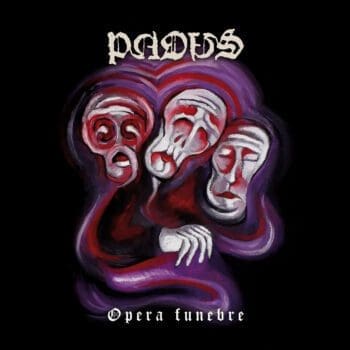
Padus, an Italian Doom Metal/Dark Ambient solo artist, unveiled his sixth full-length album, “Opera Funebre,” an instrumental doom metal piece, allows its melodies and atmospheres to breathe. The album was released through The Triad Rec.
The First Three Sins, The Summary
The Fourth Sin, Overall Discussion
An Ominous Introduction
Upon pressing the play button, the listener is ushered into an instrumental doom metal abyss, comprising seven pieces that last just under thirty minutes, which delve into rich atmospheric and melancholic themes.
A Ritual of Mourning and Despair
As the listener continues their journey, they will find that Padus’ Opera Funebre is a deeply atmospheric journey into mourning and ritualistic despair. Padus blends the heaviness of doom metal with dark ambient sounds, taking inspiration from the classic jazz trio (double bass, piano, and drums) but transforming everything into a metal guise, i.e., distorted bass, pipe organ and heavy drums. [Padus]
A Solemn March Through Sorrow
As the album progresses, it resembles a solemn march, with each track serving as a journey through sorrow, recollection, and the haunting remnants of lost ceremonies. The soundscape is constructed on a deliberately unrefined production, welcoming a spacious aesthetic that enhances the album’s ceremonial and contemplative nature. The mixing of the album emphasizes atmospheric depth, crafting a sense of expansive, resonant spaces—almost as if the music is reverberating through the aisles of an abandoned cathedral.
An Auditory Force of Devilmanship
At the same time, Opera Funebre emerges as a significant auditory force—a shadowy product of artistry that is shaped by this devilmanship adeptness, which offers the music a tightly woven and impeccably polished composition —both instrumental and musical. It saturates the listener’s ears with a powerful and resonant sound, featuring brooding bass lines that carry a formidable weight, grounding the arrangements while allowing the ambient textures to meander into ghostly territories. The chilling organ passage is also notably striking, evoking the grandeur of ceremonial mourning, echoing the early influences of Funeral Doom.
Descending into Sorrow
The haunting presence of this album is enhanced by employing reverberating drones, eerie effects, distant echoes, and unsettling tonal shifts, creating a feeling of descending into sorrow. The programmed drums, while not bad, convincingly emulate the real thing — providing the music with a slow and deliberate pace that mirrors Funeral Doom, yet possesses an almost mechanical precision due to their programmed nature. The minimalist percussion allows the ambient elements to flourish while keeping a processional rhythm intact.
A Guitar-Free Sonic Requiem
Fascinatingly, Opera Funebre does not follow the typical guitar-centric approach. Rather, the album utilizes organ and synthesizer layers to build its harmonic richness. The lack of standard guitar riffs amplifies the ritualistic and atmospheric qualities of the music, transforming it into more than merely an album—it becomes a sonic requiem, a meditation on loss and the passage of time.
Echoes of Forgotten Places
Overall, the compositions evoke imagery of abandoned cathedrals, candlelit vigils, and the slow decay of forgotten places, reinforcing the album’s existential weight. For listeners drawn to Funeral Doom, Dark Ambient, and ritualistic soundscapes, Opera Funebre stands as a fruit of art — a striking piece of sorrowful artistry; the ability to weave grief, reverence, and atmospheric depth into a cohesive experience makes it hauntingly beautiful…
The Final Incantation
As the performance nears its finale, with the concluding piece La Lingua Oscura, it brings forth incantation vocals accompanied by an abandoned cathedral soundscape. We want to give a shoutout to: The Triad Rec for introducing us and letting us review Padus and his album, Opera Funebre. Now, we are going to conclude the review by talking about the final three sins and concluding the review.
The Fifth Sin, The Memorabilia

The Sixth Sin, The Artwork
The Seventh Sin, Disrelish
Padus
MZ — Distorted bass, Organ, Drum programming

